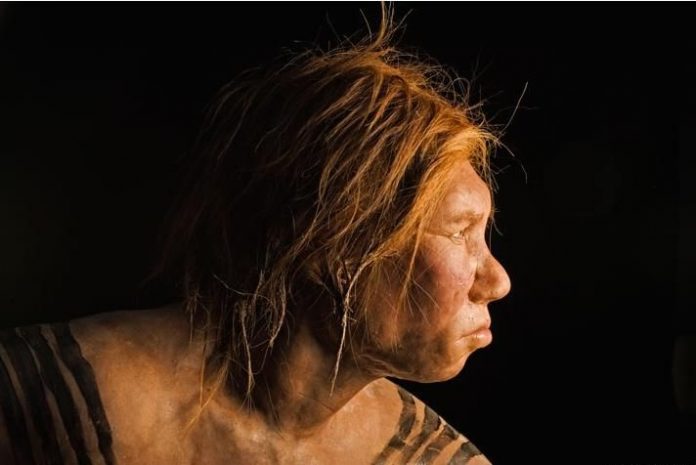Ancient humans weren’t against knocking boots with other species: We know they had sex with Neanderthals.
A study published this week in the journal Cell reveals that remnants of Denisovan DNA in the genomes of modern humans come from separate waves of prehistoric intermingling.
So, who were the Denisovans?
In 2008, archaeologists discovered a tiny fragment of a child’s finger bone in the Denisova cave in Siberia’s Altai Mountains. DNA sequencing revealed the child had been neither an early human nor a Neanderthal. Instead, she had belonged to a distinct group of archaic humans, dubbed, thus, Denisovans. Three Denisovan molars have since been found in the same cave.
Genetic analysis has shown that Denisovans and Neanderthals were more closely related to each other than either are to humans.
It seems the Neanderthal-Denisovan line split from our ancestors around one million years ago. Then around 744,000 years ago, Neanderthals and Denisovans split from each other.
Yet none of these hominin groups entirely went their separate ways. Sexual interactions between early humans, Neanderthals and Denisovans left their mark in the genomes of modern humans.
Modern Eurasians have inherited around 2% of their genome from Neanderthals. In addition to this, Denisovan DNA is woven into the genomes of people in East Asia (including many Tibetans, Chinese, and Japanese) and Papua New Guinea.
Inherited genes include those that influence skin and hair colour, as well as genes that enable adaptation to high altitudes.
It was thought this Denisovan contribution was a one-off.
“What was known already was that Oceanian individuals, notably Papuan individuals, have significant amounts of Denisovan ancestry,” says senior author Sharon Browning from the University of Washington, US.
Indeed, people from Papua New Guinea possess around 5% Denisovan DNA, which is significantly more than that found in many East Asians. Thus, it was thought all Denisovan heritage stems from a single interbreeding episode, and that the descendants of this pairing headed toward Oceania, with a smaller population later splitting off and migrating throughout Asia.
“But in this new work with East Asians,” says Browning, “we find a second set of Denisovan ancestry that we do not find in the South Asians and Papuans.”
“This Denisovan ancestry in East Asians seems to be something they acquired themselves.”
Browning and her colleagues studied more than 5600 whole-genome sequences from individuals from Oceania, Asia, Europe and America.
“We analysed all of the genomes, searching for sections of DNA that looked like they came from Denisovans,” she explains.
“When we compared pieces of DNA from the Papuans against the Denisovan genome, many sequences were similar enough to declare a match, but some of the DNA sequences in the East Asians, notably Han Chinese, Chinese Dai, and Japanese, were a much closer match with the Denisovan.”
So, although Oceanian people have more Denisovan DNA, the East Asian Denisovan DNA is actually more closely related to the Siberian Denisovans.
The implication is that two distinct waves of interbreeding must have taken place, most likely around 50,000 years ago, not long after humans left Africa. But exactly where is unknown.
Browning says its possible early Oceanians interbred with a southern group of Denisovans, while early East Asians interbred with a northern group.
Interestingly, it seems that a few of their descendants found each other. The researchers discovered that some modern East Asians have both types of Denisovan ancestry: one from each wave of human-Denisovan unions.
Interactions between hominins on the Eurasian landmass were certainly a lot more amorously complex than originally thought.















